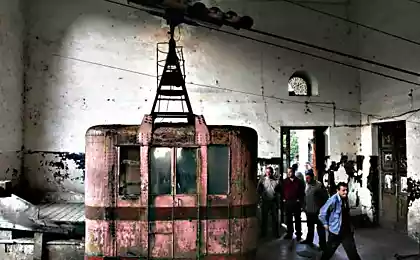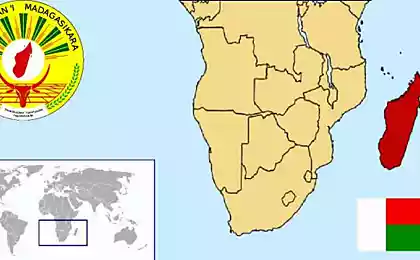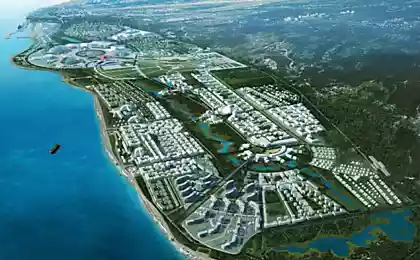1162
10 of the most spectacular cable cars of the world (46 photos)
The first cable cars in the modern sense was launched in Switzerland in 1866 and brings tourists to the viewing platform. The present construction boom cableways came in the second half of the XX century, when actively began to develop skiing.
Cable Car in the Park Zhangjiajie (China): the most exciting
Chinese Park Zhangjiajie long been a favorite among tourists. Firstly, it is here, among the rocks Wulingyuan, which inspired James Cameron to create a "flying mountain" in the movie "Avatar", is Mount Tianmen Mountain, and in it - the legendary Cave Celestial Gate.


Second, you can reach them by cable car, which many travelers, one ride on it, dubbed the "most exciting" in the world. The local cable car is no accident called the "road to heaven": in some stretches it rises at an angle of 70 °, crashing straight into the clouds.

The path to the top takes about 40 minutes, and because of the pressure drop passengers often lays the ears, and the temperature in the cabin is dramatically reduced. Most of the park is a dense fog, which adds to the mystique surrounding landscapes.

Those who still dare to overcome the distance of 7455 m, will see the world's highest miraculous cave that has arisen due to the erosion of the rocks. Locals believe that it has supernatural powers. A walk down the mountain Tianmen Mountain by bus on a streamer, which has exactly 99 turns.
The fare is 48 yuan (US $ 7.6) in one direction.

The cable car Genting (Malaysia): the fastest
Genting - City of entertainment at an altitude of 2000 meters above sea level. It is called the Las Vegas of Malaysia here built 20 luxury hotels, several amusement parks, and even the country's only legal casino.

Empire Genting - the brainchild of Chinese Lim Goh Tong. When he first announced the idea of building a mountain resort, it ridiculed: in the late 1960s, the area was covered with virgin tropical jungle. But Tong persisted, and in 1971 opened the first hotel. Then earned a casino in Genting then pushed the crowd of visitors.
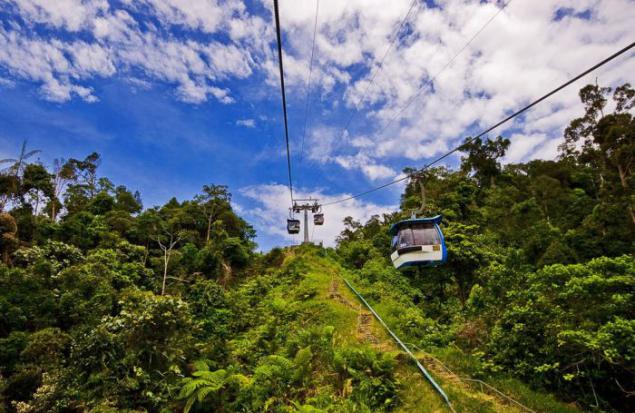
Most of the cable car route, opened on 21 February 1997 runs over the jungle, and cloudless weather with the height of the bottom can be seen scurrying monkeys.


Fare: 10 Malaysian ringgit ($ 3) in both directions.

Cableway Gulmarg (India): the most mountainous
Since 1948, Kashmir is a bone of contention between India and Pakistan. The two countries share more than half a century, the disputed territory, which is why the region has long been considered dangerous for tourism.

In recent years, fighting in Jammu and Kashmir have stopped, and the local authorities were able to deal with the development of tourism infrastructure. Today the state has a dozen tourist destinations, and one of them - Gulmarg - the largest ski resort in the Himalayas.
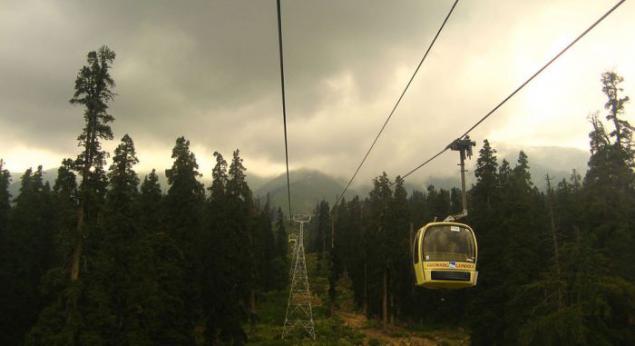
It was here in 2005, Sonia Gandhi launched a cable car to this day remains
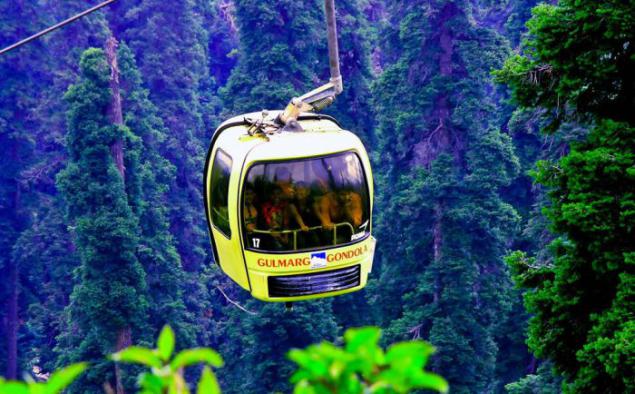
The total length of the cable car is 5 km away, and the capacity - 600 people per hour. By the way, before the opening of the monorail skiers in the mountains raised by helicopters, which made the cost of skiing in all senses of the word transcendental.
Fare: one-time rise - the first phase of 150 rupees ($ 2.7), the second phase - 250 rupees ($ 4.6).

Cableway Sternensauser (Switzerland): the worst
The most unusual road works in the Swiss resort of Hoch-Ibrig. In order to ride on it, it does not need to sit in a booth and a camera at the ready - it is necessary to wear a helmet and wearing seatbelts. The fact that cable car passengers Sternensauser move under the weight of his own body. Cable car is a cable stretched across multiple platforms at a height of 75 m above the ground. By the way, Sternensauser is the longest cable expensive of its kind in the world.

Beginning of the route is located near the upper station of the chairlift and leads down to the station, located in the valley. During the movement of the passenger has a top speed of 70 to 90 km / h, so that a feeling of free flight. It is said that adrenaline during the descent of Sternensauser no less than when jumping with a parachute.

The only downside of the cable way is that you can ride on it only in the summer. By descent allowed adults and children who have reached the age of nine, the growth of not less than 130 cm. The permissible passenger weight - from 30 to 125 kg.
Fare: 70 Swiss francs.
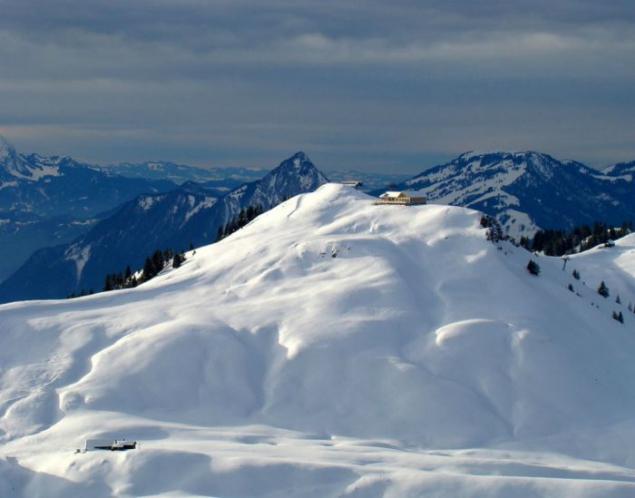
The cable car to the island of Sentosa (Singapore): is the glass
25 km south of Singapore is an island of Sentosa, and say that the future of the state is located here began with a small fishing village. Sentosa today - is an Asian island Disneyland attraction for tourists and a favorite vacation spot Singaporeans themselves. There is an amusement park, aquarium, and three kilometers of white beaches.

Getting to Sentosa is by public transport or even on foot, but most visitors choose stretched over the Strait cable car. About the construction of its Singapore government conceived in 1968, and four years later it was launched. Initially, the cable car was 43 booths. Today, their number has reached 81, the local cable car is the first in the world, where they began to walk the cabin, entirely made of glass.
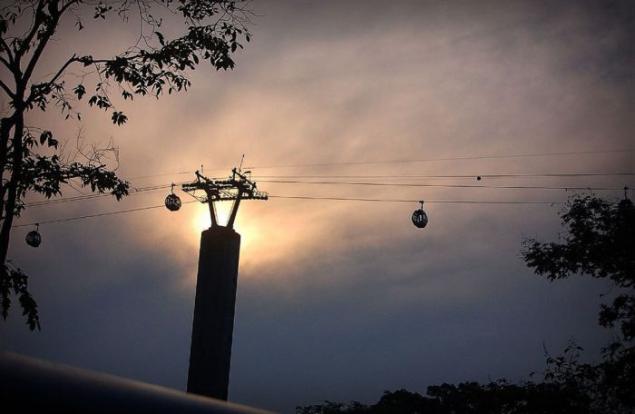
But this was not enough Singaporeans. For monorail, leading to the island of Sentosa, they have made the definition of "first jewelry" in 2010, it was launched seven VIP-rooms, roof and side glass are decorated with crystals Swarovski. Is it any wonder that the cable car - one of the most expensive ways to get to Sentosa.
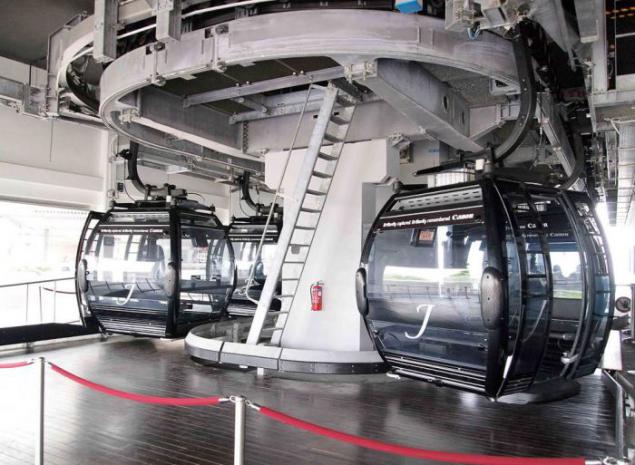
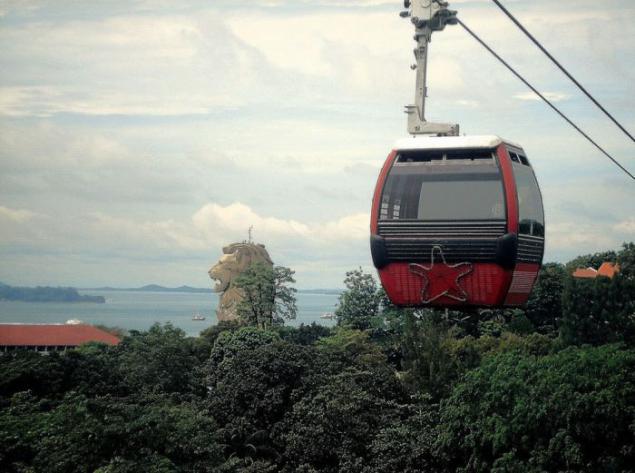
The fare is 26 Singapore dollars ($ 18.6) in both directions.

Tatev ropeway (Armenia): the longest
October 16, 2010 in Armenia was launched cable car, dubbed "Wings of Tatev". And just seven days later it brought in the Guinness Book of Records as the longest.

The first passenger cable car, stretching for 5.7 km above the gorge of the river Vorotan, became the President of Armenia Serzh Sargsyan, Catholicos of All Armenians Garegin II, and one child out of the next seven villages.
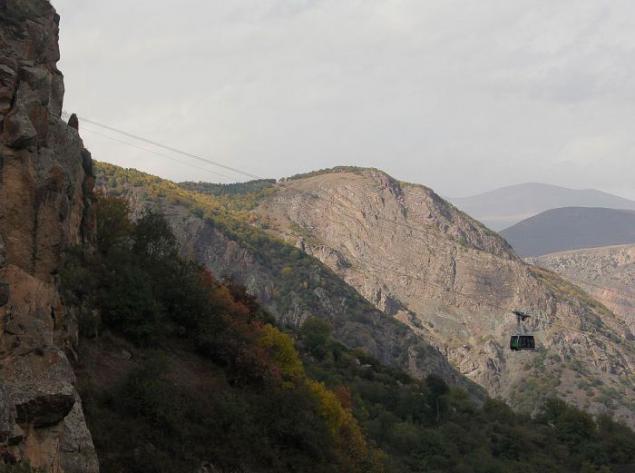
The construction of the monorail was conceived in 2009 as one of the stages of the "Tatev Revival" - a medieval monastery of IX century. In 1390 it was established by the University, where he taught both theological and secular subjects. In 1931 the monastery was badly damaged by the earthquake, and restoration work is still not finished
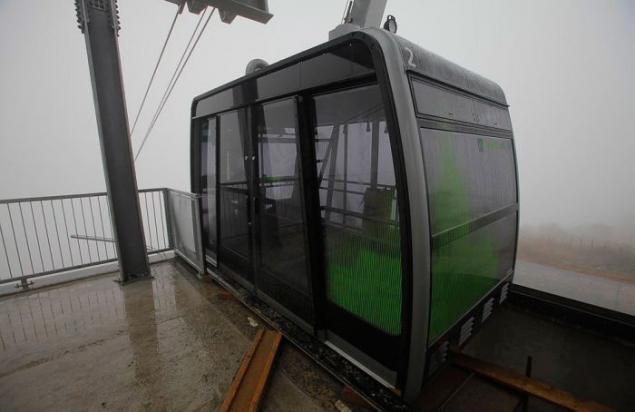
Unless there was a cable car to reach Tatev could only master a cliff along the 45 ° steep serpentine, which in winter also often blurred. But now tourists and locals can enjoy Tatev year round. Cabs are moving at a speed of 37 km / h and overcome the distance to the monastery in just 11 minutes 25 seconds.
Fare: for local residents - free of charge, for tourists - € 6.

The cable car Miskhor - Ai-Petri (Crimea): the longest unsupported span
Translated from the Turkish word "mountain pasture" means plateau. In the past, the shepherds grazed their cattle here, and in more ancient times yaylam gave a magical significance, and set them on the stone idols. Today the word "mountain pasture" in the Russian language is most often used in the Crimea, where one of the most famous is the Ai-Petri Yayla. You can reach it on the cable car Miskhor - Ai-Petri, during the rise of which - and it lasts about 15 minutes - the tourists have time to enjoy the beautiful panorama of the South-Eastern coast of Crimea - Sudak to Foros.
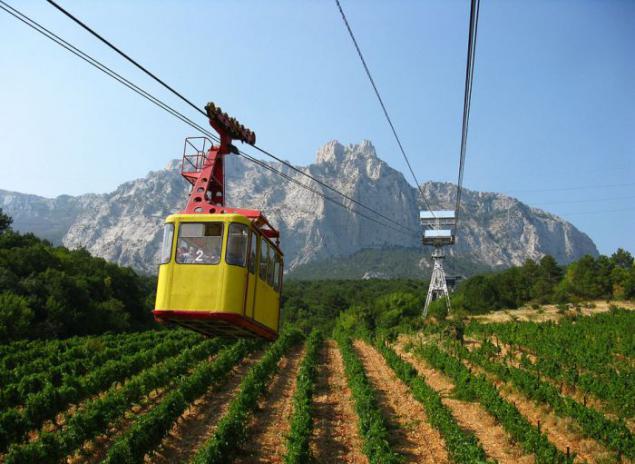
Construction monorail dragged on for 20 years. Start it was given in 1987, and to the public visiting it opened a year later. Today in Ukraine there are about a dozen cableways, and most of them are just in the Crimea.

But the cable car Miskhor - Ai-Petri is considered unique. Between its middle and upper stretches stations entered in the Guinness Book of Records the longest unsupported span in Europe: two kilometers there is no intermediate towers.
Fare: 120 hryvnia ($ 15) in both directions.

Lift Grenoble (France): the world's first urban
Writer Henri Marie Beyle, better known under the pseudonym Stendhal wrote about his hometown of Grenoble, that each street ends mountain. On the slope of one of them and is the most famous local landmark - the Bastille.

At the beginning of the XX century power Grenoble thinking about how to improve access to the Bastille, and with it to provide the capital of the French Alps tourist highlight. Thus was born the idea of building a cable car that forever changed the face of Grenoble.

September 29th, 1934 a loud beep notified the citizens of the start of the monorail, which became the world's first urban cable car. Very quickly, like the Eiffel Tower in Paris, she became a symbol of Grenoble, which remains to this day.

The first passenger cabins were quite traditional: the big "cars" can accommodate up to 21 passengers. But in 1976 they were replaced by an engineer Danny creissels little six-ball-shaped Plexiglas cubicles that very soon dubbed bubbles and cosmic eggs.
Fare: € 6, 80 in both directions.

Ropeway Masada (Israel): The most historic
Masada - ancient fortress, built in the mountains of the Judean Desert on the orders of Herod the Great in 25 BC. e. Here, surrounded by towering cliffs, the king created a shelter for themselves, which were built palaces, the synagogue, bathhouse, warehouses, provisions and weapons and even running water.

In 73 BC. e. Masada was taken by the Romans, who used it as one of its strong points, and after the fall of the Roman Empire on the fortress forgotten until 1862, when archaeologists stumbled upon her ruins.

Masada has always attracted tourists, but only after 1971, when it was built cable car, has turned into one of the most visited historical sites of Israel. Before that rise to the top of the rock could only be on the so-called serpentine path, which in ancient times used the rebels, and today - archeologists.

Ropeway leading to the top of the plateau, is considered to be the lowest in the world, its lower station is at an altitude of 257 m above sea level, and the top - only 33 m above. The distance to the top of the cabinet - they are cable car runs on just two - overcomes a few minutes, gradually revealing more and more spectacular views of the surrounding desert and the Dead Sea.
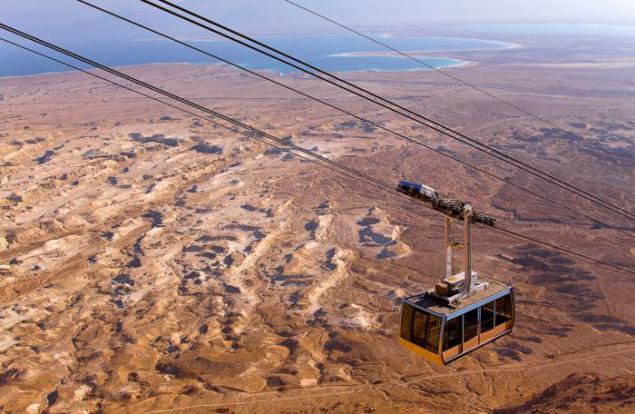
Fare: 72 shekels ($ 19) in both directions.

The Prague cableway: oldest
Exactly 120 years ago it launched the most famous Prague cableway leading to the hill Petrin.
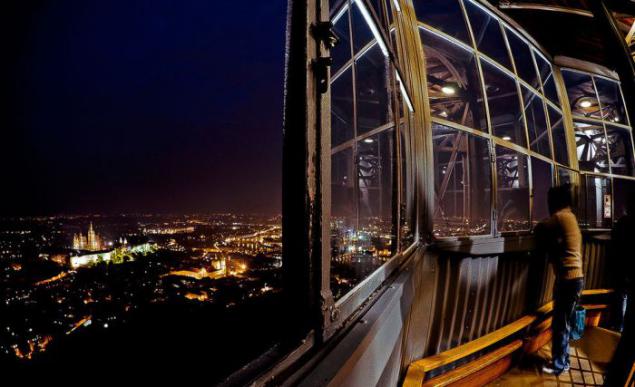
It all started with the fact that in 1889 the Club of Czech tourists went to Paris and was struck by the view of the Eiffel Tower. On the hill Petrin built it up, and then decided to spend her cable car, which was built in less than a year. Cable car - is not suspended, and trailers on rails, driven in motion rope - easily rises to a height of 102 m to 50 passengers at a time, with ropes of rotating waterwheel.

In 1916, the Petřín lift ceased operation due to the First World War - by a long 16 years. Only in 1932 it started again, replacing the water wheel on the electric current and extended to 511 m. The second time, the cable car stopped in 1965, when a landslide destroyed part of the railway track. Prague residents had to wait another 20 years before the famous funicular once again able to deliver them to the top of Petrin Hill. But since it is included in the city's public transport system and stops only during scheduled scans.
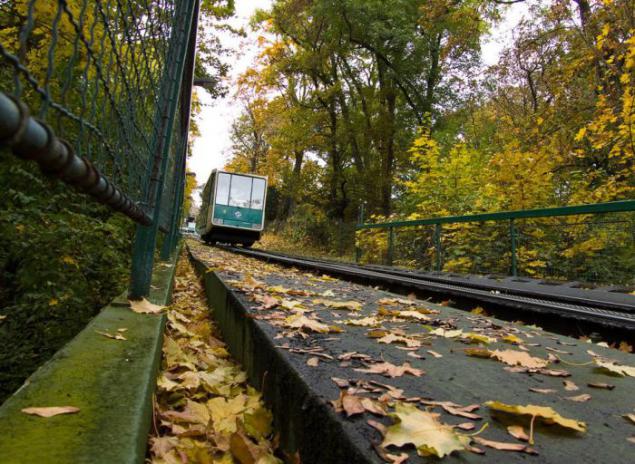
Cost recovery: 24 Czech crowns ($ 1.2).
Cableway Complexo do Alemao (Brazil): the cheapest
Favelas of Rio de Janeiro has long been notorious for how the most criminogenic neighborhoods Brazilian capital, dangerous not only for tourists but also for locals. And the easiest way to move here by foot, as through the local hills and narrow streets public transportation almost does not go.
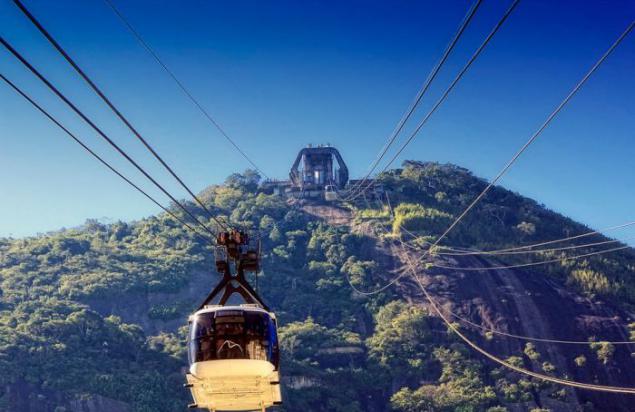
Therefore, the authorities decided to hold the Rio suburbs of six Brazilian capitals cableway, which began work in July 2011. Construction took a year and a half, and the costs amounted to 210 million reais.
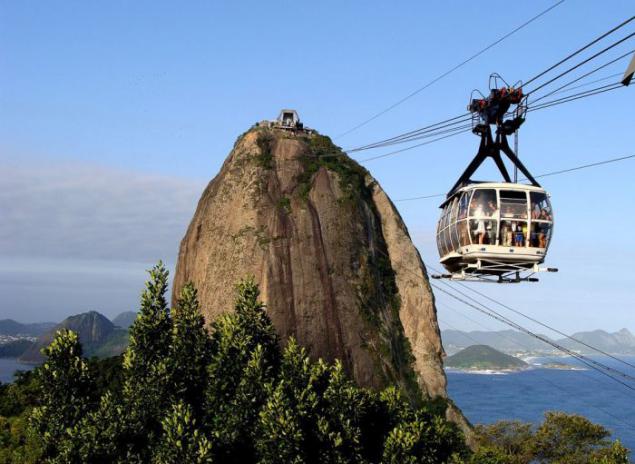
Cable car stretches over the favelas in the 3456 m, and the city became the longest cable car in the world. In her ply 152 cabin capable of carrying up to 3000 people per hour.

Local residents are entitled to two free tickets per day for travel in the Complexo do Alemao, and those who exceed this limit have to pay for the trip 1 Brazilian real - as much as paying tourists.
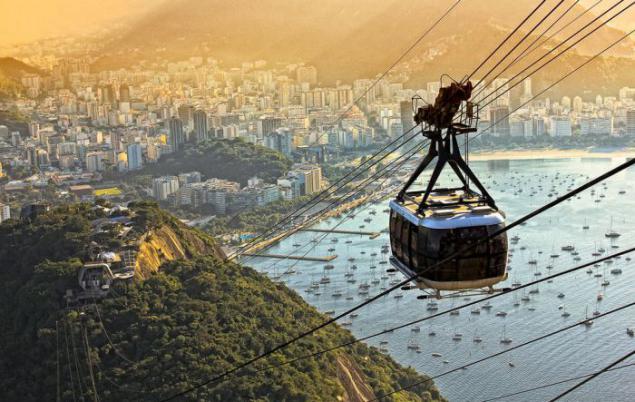
For more relevance cableway, which can significantly facilitate access to the sports facilities of the city, acquired in anticipation of the World Cup 2014 and the 2016 Olympics to be held in Rio de Janeiro.
Price directions: 1 Brazilian real ($ 0.5).

Cable Car in the Park Zhangjiajie (China): the most exciting
Chinese Park Zhangjiajie long been a favorite among tourists. Firstly, it is here, among the rocks Wulingyuan, which inspired James Cameron to create a "flying mountain" in the movie "Avatar", is Mount Tianmen Mountain, and in it - the legendary Cave Celestial Gate.


Second, you can reach them by cable car, which many travelers, one ride on it, dubbed the "most exciting" in the world. The local cable car is no accident called the "road to heaven": in some stretches it rises at an angle of 70 °, crashing straight into the clouds.

The path to the top takes about 40 minutes, and because of the pressure drop passengers often lays the ears, and the temperature in the cabin is dramatically reduced. Most of the park is a dense fog, which adds to the mystique surrounding landscapes.

Those who still dare to overcome the distance of 7455 m, will see the world's highest miraculous cave that has arisen due to the erosion of the rocks. Locals believe that it has supernatural powers. A walk down the mountain Tianmen Mountain by bus on a streamer, which has exactly 99 turns.
The fare is 48 yuan (US $ 7.6) in one direction.

The cable car Genting (Malaysia): the fastest
Genting - City of entertainment at an altitude of 2000 meters above sea level. It is called the Las Vegas of Malaysia here built 20 luxury hotels, several amusement parks, and even the country's only legal casino.

Empire Genting - the brainchild of Chinese Lim Goh Tong. When he first announced the idea of building a mountain resort, it ridiculed: in the late 1960s, the area was covered with virgin tropical jungle. But Tong persisted, and in 1971 opened the first hotel. Then earned a casino in Genting then pushed the crowd of visitors.

Most of the cable car route, opened on 21 February 1997 runs over the jungle, and cloudless weather with the height of the bottom can be seen scurrying monkeys.


Fare: 10 Malaysian ringgit ($ 3) in both directions.

Cableway Gulmarg (India): the most mountainous
Since 1948, Kashmir is a bone of contention between India and Pakistan. The two countries share more than half a century, the disputed territory, which is why the region has long been considered dangerous for tourism.

In recent years, fighting in Jammu and Kashmir have stopped, and the local authorities were able to deal with the development of tourism infrastructure. Today the state has a dozen tourist destinations, and one of them - Gulmarg - the largest ski resort in the Himalayas.

It was here in 2005, Sonia Gandhi launched a cable car to this day remains

The total length of the cable car is 5 km away, and the capacity - 600 people per hour. By the way, before the opening of the monorail skiers in the mountains raised by helicopters, which made the cost of skiing in all senses of the word transcendental.
Fare: one-time rise - the first phase of 150 rupees ($ 2.7), the second phase - 250 rupees ($ 4.6).

Cableway Sternensauser (Switzerland): the worst
The most unusual road works in the Swiss resort of Hoch-Ibrig. In order to ride on it, it does not need to sit in a booth and a camera at the ready - it is necessary to wear a helmet and wearing seatbelts. The fact that cable car passengers Sternensauser move under the weight of his own body. Cable car is a cable stretched across multiple platforms at a height of 75 m above the ground. By the way, Sternensauser is the longest cable expensive of its kind in the world.

Beginning of the route is located near the upper station of the chairlift and leads down to the station, located in the valley. During the movement of the passenger has a top speed of 70 to 90 km / h, so that a feeling of free flight. It is said that adrenaline during the descent of Sternensauser no less than when jumping with a parachute.

The only downside of the cable way is that you can ride on it only in the summer. By descent allowed adults and children who have reached the age of nine, the growth of not less than 130 cm. The permissible passenger weight - from 30 to 125 kg.
Fare: 70 Swiss francs.

The cable car to the island of Sentosa (Singapore): is the glass
25 km south of Singapore is an island of Sentosa, and say that the future of the state is located here began with a small fishing village. Sentosa today - is an Asian island Disneyland attraction for tourists and a favorite vacation spot Singaporeans themselves. There is an amusement park, aquarium, and three kilometers of white beaches.

Getting to Sentosa is by public transport or even on foot, but most visitors choose stretched over the Strait cable car. About the construction of its Singapore government conceived in 1968, and four years later it was launched. Initially, the cable car was 43 booths. Today, their number has reached 81, the local cable car is the first in the world, where they began to walk the cabin, entirely made of glass.

But this was not enough Singaporeans. For monorail, leading to the island of Sentosa, they have made the definition of "first jewelry" in 2010, it was launched seven VIP-rooms, roof and side glass are decorated with crystals Swarovski. Is it any wonder that the cable car - one of the most expensive ways to get to Sentosa.


The fare is 26 Singapore dollars ($ 18.6) in both directions.

Tatev ropeway (Armenia): the longest
October 16, 2010 in Armenia was launched cable car, dubbed "Wings of Tatev". And just seven days later it brought in the Guinness Book of Records as the longest.

The first passenger cable car, stretching for 5.7 km above the gorge of the river Vorotan, became the President of Armenia Serzh Sargsyan, Catholicos of All Armenians Garegin II, and one child out of the next seven villages.

The construction of the monorail was conceived in 2009 as one of the stages of the "Tatev Revival" - a medieval monastery of IX century. In 1390 it was established by the University, where he taught both theological and secular subjects. In 1931 the monastery was badly damaged by the earthquake, and restoration work is still not finished

Unless there was a cable car to reach Tatev could only master a cliff along the 45 ° steep serpentine, which in winter also often blurred. But now tourists and locals can enjoy Tatev year round. Cabs are moving at a speed of 37 km / h and overcome the distance to the monastery in just 11 minutes 25 seconds.
Fare: for local residents - free of charge, for tourists - € 6.

The cable car Miskhor - Ai-Petri (Crimea): the longest unsupported span
Translated from the Turkish word "mountain pasture" means plateau. In the past, the shepherds grazed their cattle here, and in more ancient times yaylam gave a magical significance, and set them on the stone idols. Today the word "mountain pasture" in the Russian language is most often used in the Crimea, where one of the most famous is the Ai-Petri Yayla. You can reach it on the cable car Miskhor - Ai-Petri, during the rise of which - and it lasts about 15 minutes - the tourists have time to enjoy the beautiful panorama of the South-Eastern coast of Crimea - Sudak to Foros.

Construction monorail dragged on for 20 years. Start it was given in 1987, and to the public visiting it opened a year later. Today in Ukraine there are about a dozen cableways, and most of them are just in the Crimea.

But the cable car Miskhor - Ai-Petri is considered unique. Between its middle and upper stretches stations entered in the Guinness Book of Records the longest unsupported span in Europe: two kilometers there is no intermediate towers.
Fare: 120 hryvnia ($ 15) in both directions.

Lift Grenoble (France): the world's first urban
Writer Henri Marie Beyle, better known under the pseudonym Stendhal wrote about his hometown of Grenoble, that each street ends mountain. On the slope of one of them and is the most famous local landmark - the Bastille.

At the beginning of the XX century power Grenoble thinking about how to improve access to the Bastille, and with it to provide the capital of the French Alps tourist highlight. Thus was born the idea of building a cable car that forever changed the face of Grenoble.

September 29th, 1934 a loud beep notified the citizens of the start of the monorail, which became the world's first urban cable car. Very quickly, like the Eiffel Tower in Paris, she became a symbol of Grenoble, which remains to this day.

The first passenger cabins were quite traditional: the big "cars" can accommodate up to 21 passengers. But in 1976 they were replaced by an engineer Danny creissels little six-ball-shaped Plexiglas cubicles that very soon dubbed bubbles and cosmic eggs.
Fare: € 6, 80 in both directions.

Ropeway Masada (Israel): The most historic
Masada - ancient fortress, built in the mountains of the Judean Desert on the orders of Herod the Great in 25 BC. e. Here, surrounded by towering cliffs, the king created a shelter for themselves, which were built palaces, the synagogue, bathhouse, warehouses, provisions and weapons and even running water.

In 73 BC. e. Masada was taken by the Romans, who used it as one of its strong points, and after the fall of the Roman Empire on the fortress forgotten until 1862, when archaeologists stumbled upon her ruins.

Masada has always attracted tourists, but only after 1971, when it was built cable car, has turned into one of the most visited historical sites of Israel. Before that rise to the top of the rock could only be on the so-called serpentine path, which in ancient times used the rebels, and today - archeologists.

Ropeway leading to the top of the plateau, is considered to be the lowest in the world, its lower station is at an altitude of 257 m above sea level, and the top - only 33 m above. The distance to the top of the cabinet - they are cable car runs on just two - overcomes a few minutes, gradually revealing more and more spectacular views of the surrounding desert and the Dead Sea.

Fare: 72 shekels ($ 19) in both directions.

The Prague cableway: oldest
Exactly 120 years ago it launched the most famous Prague cableway leading to the hill Petrin.

It all started with the fact that in 1889 the Club of Czech tourists went to Paris and was struck by the view of the Eiffel Tower. On the hill Petrin built it up, and then decided to spend her cable car, which was built in less than a year. Cable car - is not suspended, and trailers on rails, driven in motion rope - easily rises to a height of 102 m to 50 passengers at a time, with ropes of rotating waterwheel.

In 1916, the Petřín lift ceased operation due to the First World War - by a long 16 years. Only in 1932 it started again, replacing the water wheel on the electric current and extended to 511 m. The second time, the cable car stopped in 1965, when a landslide destroyed part of the railway track. Prague residents had to wait another 20 years before the famous funicular once again able to deliver them to the top of Petrin Hill. But since it is included in the city's public transport system and stops only during scheduled scans.

Cost recovery: 24 Czech crowns ($ 1.2).
Cableway Complexo do Alemao (Brazil): the cheapest
Favelas of Rio de Janeiro has long been notorious for how the most criminogenic neighborhoods Brazilian capital, dangerous not only for tourists but also for locals. And the easiest way to move here by foot, as through the local hills and narrow streets public transportation almost does not go.

Therefore, the authorities decided to hold the Rio suburbs of six Brazilian capitals cableway, which began work in July 2011. Construction took a year and a half, and the costs amounted to 210 million reais.

Cable car stretches over the favelas in the 3456 m, and the city became the longest cable car in the world. In her ply 152 cabin capable of carrying up to 3000 people per hour.

Local residents are entitled to two free tickets per day for travel in the Complexo do Alemao, and those who exceed this limit have to pay for the trip 1 Brazilian real - as much as paying tourists.

For more relevance cableway, which can significantly facilitate access to the sports facilities of the city, acquired in anticipation of the World Cup 2014 and the 2016 Olympics to be held in Rio de Janeiro.
Price directions: 1 Brazilian real ($ 0.5).









